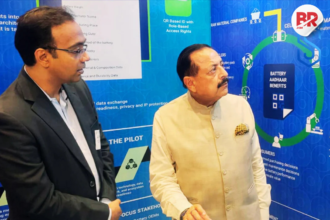
The government is considering extending the deadline for solar module manufacturing under the PLI scheme, as only 20% of the awarded capacity has been commissioned so far.
According to the Ministry of New and Renewable Energy (MNRE), just 25.5 gigawatts (GW) out of 130.7 GW have gone live under the scheme, raising serious concerns about the country’s solar goals.

For the average person, this means India’s ambitious clean energy targets could slow down. More delays could mean higher dependency on imported solar components—and slower adoption of affordable solar power at home and in businesses.
Now here’s where it gets frustrating: we’ve got companies ready to go, land allocated, and even the machinery installed. But the engineers to operate and train teams? Stuck, mostly because of visa red tape and geopolitics. Most of the machines come from China, and the tech support? Also Chinese. But many technicians were denied visas or faced long delays.
Chinese Visas, Tech Trouble & Missing Links
Many companies selected under the PLI scheme—including Reliance, Waaree, ReNew, Avaada, and JSW—are dealing with sluggish technology transfers and supply chain messes. A senior executive from one of the solar firms put it bluntly: “The machines are in place, but we can’t run them without Chinese experts. Even the software is in Mandarin.”
India lacks domestic capacity to produce ingots, wafers, and polysilicon—the building blocks of solar cells. These are mostly imported, and when global supply chains go haywire, Indian projects suffer. Add to that the rising prices of critical components like polysilicon, EVA, and aluminium, and it’s no surprise the timeline is off.
The government had initially set April 2026 as the deadline for companies to commission integrated or partially integrated solar module plants. But now, with progress crawling, MNRE is considering either a blanket extension or case-by-case deadline relief.
Also Read Poonawalla Fincorp Deploys AI to Transform Customer Engagement and Compliance
What’s at Stake?
India’s total solar module manufacturing capacity is around 90 GW, with 17.5 GW coming from the PLI scheme so far. For solar cells, it’s 25 GW, of which only 6 GW is under PLI.
The idea behind the PLI scheme was to boost domestic manufacturing and cut dependency on China. But the irony? We’re still tied to China for tech, parts, and people. This is like trying to break up with your ex while still living in their apartment.
The scheme’s first version (Tranche I) launched in 2021, followed by Tranche II in 2022. Projects were awarded under three categories—PWCM (polysilicon to module), WCM (wafer to module), and CM (cell to module). Solar Energy Corporation of India (SECI) is the nodal agency overseeing this.
Still, with just a year left before the original deadline, many stakeholders say it’s time to face reality and extend it. Industry insiders argue that the three-year timeline was always ambitious, especially for such capital-intensive and tech-heavy projects.
India’s solar ambitions aren’t dying—but they are definitely delayed. The PLI scheme has the potential to put India on the global solar map. But only if we cut the red tape, fix the tech gaps, and maybe, just maybe, get those Chinese technicians some visas.
Also Read Infosys BPM Has Launched AI-Powered Invoice Processing to Simplify Finance Operations












